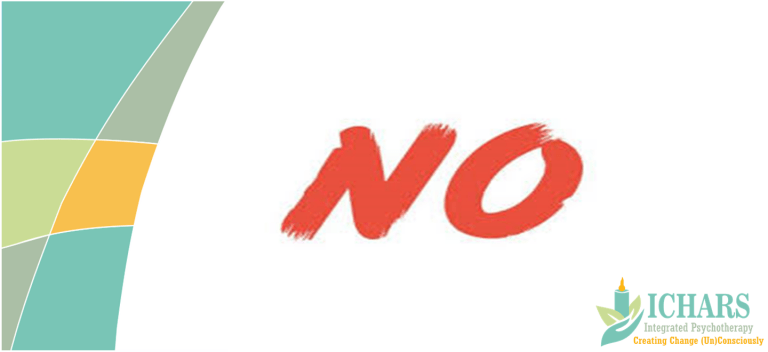Introduction
Knowing when to say NO and saying NO when it is important to say No is the key to live a happy life. It is for this reason that one must learn the Subtle Art of Saying No.
What is the Subtle Art of Saying NO
It is the ability to say NO in a way that doesn’t offend the person you are saying No to.
Why is it important to develop the art of saying No: Case Study
 Riya has a habit of saying yes to everything assigned to her.
Riya has a habit of saying yes to everything assigned to her.
Whenever Riya is told to do something, she agrees to do it even if she just doesn’t want to do it.
There are times when she knows that she wouldn’t be able to do it or simply she doesn’t have time to do it but still she agrees to do it. And at times, she even goes out of her way to complete it.
Sometimes she is frustrated because this leaves her no time to complete her tasks.
This pattern is evident not only in personal life but also in professional life.
She decides to say “no” the next time someone asks her to do something. But when the time comes, she actually says yes again. Every time she does it, she hates herself.
At the same time, she fears people will start disliking her, she won’t be a good person and people will think that she is selfish, if she says “no”.
She also thinks that by saying no, she will bring criticism to herself and her friends would leave her.
This again stops her from saying “no”.
Does Riya’s story sound familiar?
Ever been in a situation where you said yes, though you knew you should have said NO?
We often hear people saying,
Phrases such as these are very common and many of us often go out of our way to help someone because we cannot say no to them.
Why people find it difficult to say NO?

- Most of us feel compelled to agree to every request, simply because of the fear of being criticised or the fear of losing respect of the person we are saying No to.
What we often don’t realise is that even by learning to say a simple no, we can earn respect from not only ourselves but also from others around us. - Self confidence and self-esteem play a huge role when it comes to this.
We often say yes to things because deep inside we lack confidence and feel nervous because our worth is dependent on what other people say or think about us. - Not only this, saying yes to every request may have its roots in your childhood. We are often raised to not say ‘No’ to our parents and other grown-ups around us. Sometimes, we grow up believing,
“I am only lovable if I take care of everyone else needs”.
- As a result, we eventually become people pleasers and our self-worth soon becomes dependent on what we do for people or what we do in order to please them.
Problem with Not being able to Say NO
 Being unable to say “no” may take a toll on your mental health, and makes you feel exhausted, frustrated, stressed and irritable. This happens because you may not be able to achieve the expected outcome of pleasing everyone.
Being unable to say “no” may take a toll on your mental health, and makes you feel exhausted, frustrated, stressed and irritable. This happens because you may not be able to achieve the expected outcome of pleasing everyone.
You may start blaming yourself for it. Going out of your way to do things people ask you to do, may leave you with no time for self and loved ones which may add to your frustration.
Fortunately, you can learn the subtle art of saying ‘No’ in a few simple steps.
5 Simple steps that enable you to learn the subtle art of saying NO
- Be firm and direct –
Say ‘no’ using phrases, such as Thank you for considering me and coming to me but I’m afraid as I think it is not convenient for me right now”. Or “I’m sorry but I won’t be able to help this evening”. While keeping the response simple and direct, try to be strong in your body language. Do not be over-apologetic because you are not doing anything wrong in politely denying what you can’t do. - Take your time –
In order to interrupt the “Yes” pattern, practice using phrases like “I’ll get back to you”. This will help you consider your options. Having thought it through, you will be able to say ‘no’ with much greater confidence. - Consider a compromise –
When someone comes to you with a request, you can try negotiating and come up with ways that suit both of you. But avoid compromising if you really want to say ‘no’ or have limited time and ability to do so. - Separate refusal from rejection –
Saying ‘no’ does not mean rejecting someone or being rejected by someone because you are turning down a request, not the person. Just as people have the choice to ask you for favour, people will understand you also have the choice to say ‘no’. - Be true to yourself.
Be clear and honest with yourself about what you truly want.
If you are find it difficult to say NO to things despite of knowing that it is in your interest to say NO, then you know it is time for you to talk to a specialist who can help you learn the subtle art of saying NO.
Therapists Niche: Helping Clients learn the subtle art of Saying NO
- The first step is to help the client understand the consequences of not being able to say No. Asking questions about how not being able to say no has affected the clients life is a good starting point to create this awareness. The therapist can also ask the client to imagine a future where they continue saying yes to everything and comparing it with the future where they are able to say NO, where it is important to say NO.
- Next step is to help the client deal with any belief’s that may be stopping the client from being able to say NO. The NLP belief change process or N-Step reframing process can be used for the same.
- If there have been childhood experiences where saying no lead to negative consequences for the client, identifying the childhood experiences and helping client get over it will be important. The therapist can use Inner Child Healing or NLP Timeline or Hypnotic Regression for this.
- Helping the client develop the confidence to say NO and making the client imagine the events in future where they are confidently saying NO will be the next step. NLP anchoring or Hypnotic Suggestions can be used for this.
- In case the client has a thought like “it is wrong to say NO, when people need help” that stops them from saying NO, If-then Statements can be used to help the client restructure their thoughts.
If you are a mental health practitioner who would like to learn and effectively use the different techniques mentioned in this post, check out the Cognitive Hypnotic Psychotherapy™ Program. The program is based on the integration of different approaches to psychotherapy (cognitive, behavioural, psycho-dynamics and humanistic) with techniques from Hypnosis, NLP, Mindfulness and Metaphor Therapy.

